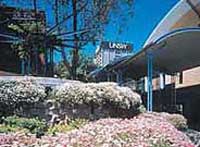|
|||||||||||||||||||||||||||||||||||||||||||||||
| Comparative Trade Mark Law - LAWS8144 | |||||||||||||||||||||||||||||||||||||||||||||||

Description This course will examine the laws governing trade marks and related rights from a comparative perspective. Topics such as the justifications for trade mark protection; the definition and registration of trade marks; licensing and assignment; infringement, defences and remedies; and the protection of unregistered marks will be explored under both Australian law and the law of various other jurisdictions, including the EU and the US. Other topics such as the international harmonisation of trade mark law, the global protection of well known brands and the implementation of the Madrid international system in Australia will also be considered, as will emerging trends, policy debates and political arguments over the scope of trade mark protection.
LLM Specialisation Recommended Prior Knowledge This course assumes a working knowledge of intellectual property based on study at undergraduate level or through completion of the postgraduate course LAWS8017 Intellectual Property Law. You will be expected to have an overview of intellectual property law and/or to have read a recent IP textbook (such as Davison et al, Australian Intellectual Property Law (2nd edn) (Cambridge University Press, 2011) or Stewart et al, Intellectual Property in Australia (4th ed) (LexisNexis, 2010) and IP casebook (such as Bowrey et al, Australian Intellectual Property: Commentary, Law and Practice (Oxford University Press, 2010).
Graduate Diploma of Applied Intellectual Property students are expected to have a working knowledge of intellectual property based on study of the postgraduate course LAWS8046 Intellectual Property Law and Innovation. Course Objectives A candidate who has successfully completed this course should:
Main Topics
Assessment Research Plan 10%
Research Essay 7,000 words 70% Class Participation 20% Course Texts Prescribed Resources Refer to Course Outline provided by lecturer at the beginning of session.
|
|||||||||||||||||||||||||||||||||||||||||||||||


